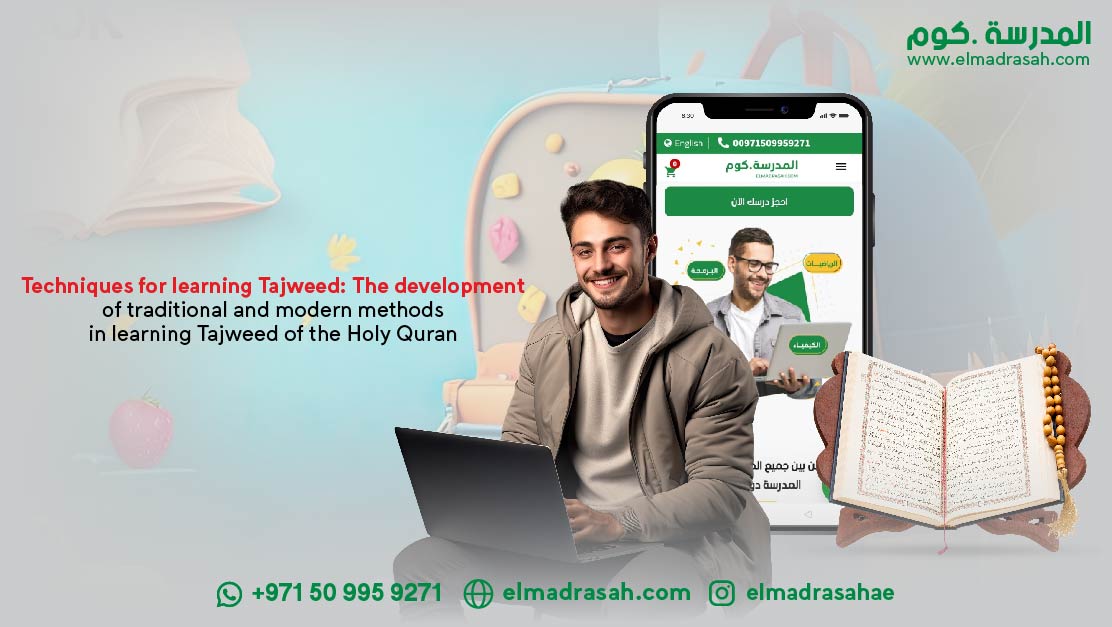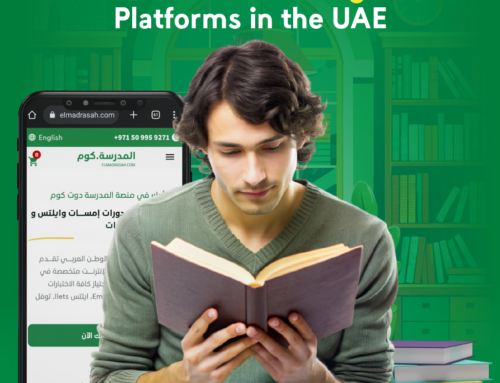
For centuries, the art of mastering the recitation of the Holy Quran has been passed down through traditional teaching methods, preserving the authenticity and sanctity of Islam’s sacred text. However, with the rapid advancements in technology and the widespread availability of digital platforms, the landscape of learning Tajweed of the Holy Quran from zero has undergone a significant transformation.
Evolution of learning Tajweed of the Holy Quran methods
We delve into the evolution of learning Tajweed of the Holy Quran methods, tracing their journey from the traditional roots to the digital avenues that exist today. We explore how technology has revolutionized the way learners access and engage with Tajweed teachings, blurring geographical boundaries and making this ancient art more accessible to a global audience.
Through the exploration of innovative learning platforms, An application for learning Tajweed of the Quran with training, and virtual classrooms, students now have the opportunity to learn and practice Tajweed at their own pace and from the convenience of their own homes. However, it is crucial to understand the challenges and considerations associated with this digital shift, ensuring that the essence of Tajweed is preserved while embracing the advantages that technology offers.
Join us on this insightful journey as we unravel the fascinating evolution of learning Tajweed of the Holy Quran methods and their impact on the recitation of the Holy Quran in the digital age.
Traditional methods of Tajweed learning
For centuries, Tajweed has been taught through traditional methods that focus on the transmission of knowledge from teacher to student in a face-to-face setting. These traditional methods emphasize the importance of a qualified teacher who possesses a deep understanding of the rules and intricacies of Tajweed. The teacher guides the student through the various aspects of Tajweed, such as correct pronunciation, intonation, and rhythm, ensuring that they adhere to the rules set forth by classical Islamic scholars.
In traditional Tajweed learning, students would gather in a physical classroom, often in a mosque or Islamic center, to receive instruction from a knowledgeable teacher. The teacher would recite verses from the Holy Quran, and the students would listen and imitate the teacher’s recitation. The teacher would then provide feedback and corrections to help the students refine their recitation skills. This interactive and personal approach allowed for direct guidance and immediate feedback, fostering a strong teacher-student relationship and creating a supportive learning environment.
However, traditional methods of learning Tajweed of the Holy Quran are not without their limitations. One of the major challenges is the lack of accessibility, especially for those living in remote areas or with limited access to qualified teachers. Additionally, the rigid structure of traditional classrooms may not accommodate the diverse learning styles and schedules of students. These limitations have led to the exploration of alternative methods that leverage technology to overcome these challenges and make Tajweed more accessible to a wider audience.
Challenges and limitations of traditional learning Tajweed of the Holy Quran methods
While traditional methods of learning Tajweed of the Holy Quran have their merits, they also present certain challenges and limitations. One of the primary challenges is the limited availability of qualified teachers. Tajweed requires a deep understanding of the Arabic language, Quranic rules, and the ability to recite with correct pronunciation and intonation. Finding a qualified teacher who possesses these skills can be challenging, especially for those living in non-Muslim majority countries or remote areas.
Furthermore, traditional methods often require physical attendance in a classroom setting, which may not be feasible for individuals with busy schedules or those who live far away from a mosque or Islamic center. This lack of accessibility can hinder individuals’ ability to learn Tajweed and engage with the recitation of the Holy Quran.
Another limitation of traditional learning Tajweed of the Holy Quran methods is the lack of individualized instruction. In a traditional classroom, the teacher must cater to the needs of multiple students simultaneously, making it difficult to provide personalized attention and feedback to each student. This can result in some students not receiving the necessary guidance to overcome specific challenges in their recitation.
These challenges and limitations have paved the way for the integration of digital platforms and technologies into learning Tajweed of the Holy Quran methods, offering solutions to overcome these barriers and enhance the learning experience for students.
The rise of digital platforms for Tajweed learning
The advent of digital platforms and technologies has revolutionized the way Tajweed is taught and learned. With the widespread availability of internet access and the proliferation of smartphones, learners now have the opportunity to access Tajweed resources from anywhere in the world, at any time. This has opened up a world of possibilities for individuals who were previously limited by geographical barriers or lack of qualified teachers.
Digital platforms dedicated to learning Tajweed of the Holy Quran have emerged, offering a wide range of resources, including video tutorials, interactive lessons, and practice exercises. These platforms often feature qualified teachers who provide comprehensive instruction on the rules and principles of Tajweed. Students can watch instructional videos, follow along with the recitation of verses, and practice their own recitation skills.
In addition to dedicated learning platforms, numerous mobile applications have been developed to facilitate Tajweed learning. These apps provide guidance on correct pronunciation, intonation, and rhythm, allowing users to practice their recitation skills independently. Many of these apps also offer feedback and corrections, helping learners refine their recitation and ensuring accuracy in their recitation of the Holy Quran.
Virtual classrooms have also gained popularity in Tajweed learning. These online classrooms connect students with qualified teachers through live video conferencing. Students can interact with the teacher in real-time, ask questions, and receive immediate feedback on their recitation. This virtual learning environment brings the benefits of traditional face-to-face instruction to students who may not have access to local qualified teachers.
The rise of digital platforms, apps, and virtual classrooms has made learning Tajweed of the Holy Quran more accessible and convenient than ever before. Learners can now engage with Tajweed teachings at their own pace, from the comfort of their own homes, and connect with teachers and fellow students from around the world.
Advantages of digital learning Tajweed of the Holy Quran methods
Digital Learning Tajweed of the Holy Quran methods offer several advantages over traditional methods, enhancing the overall learning experience for students. One of the key advantages is the flexibility and convenience they provide. Learners can access Tajweed resources and lessons at any time, fitting their learning around their own schedules. This flexibility is particularly beneficial for individuals with busy lifestyles or those who are unable to attend physical classes due to geographical limitations.
Digital platforms and apps also offer a self-paced learning experience. Students can progress through the lessons at their own speed, revisiting difficult concepts or spending more time on areas that require additional practice. This personalized approach allows individuals to learn Tajweed at their own pace, ensuring a thorough understanding of the rules and principles.
Another advantage of digital learning Tajweed of the Holy Quran methods is the accessibility they provide. Individuals who may not have access to qualified teachers or live in remote areas can now engage with Tajweed teachings and refine their recitation skills. The internet has effectively removed the geographical barriers that previously limited the spread of Tajweed knowledge, making it accessible to a global audience.
Furthermore, digital platforms often incorporate interactive tools and resources to enhance the learning experience. Visual aids, such as highlighting specific words or letters, can help students identify and understand the correct pronunciation and intonation. Interactive exercises and quizzes allow learners to practice their recitation skills and receive instant feedback on their performance.
These advantages make digital learning Tajweed of the Holy Quran methods a valuable complement to traditional methods, allowing individuals to engage with Tajweed teachings in a way that suits their individual learning styles and needs.
Interactive tools and resources for Tajweed learning
Digital Learning Tajweed of the Holy Quran methods are enriched by a variety of interactive tools and resources that facilitate the learning process. These tools aim to engage learners and provide a more immersive and interactive experience, enhancing their understanding of Tajweed principles and their ability to apply them in their recitation.
One such tool is the use of visual aids, which can help learners visualize the correct pronunciation and intonation of specific words or letters. By highlighting specific elements of the text, such as elongated vowels or letters with specific characteristics, learners can better understand and internalize the rules of Tajweed. These visual aids can be incorporated into digital platforms, apps, and virtual classrooms, allowing learners to engage with the text in a more dynamic and interactive manner.
Another interactive resource is the inclusion of audio recordings and recitations by qualified teachers. Learners can listen to these recordings and compare their own recitation to the correct pronunciation and intonation. This auditory feedback helps students identify areas that require improvement and allows them to refine their recitation skills.
Interactive exercises and quizzes are also valuable tools for Tajweed learning. These exercises provide learners with opportunities to practice their recitation skills and apply the rules they have learned. Immediate feedback on their performance allows students to identify and correct any mistakes, ensuring accuracy in their recitation.
Digital platforms and apps can also incorporate features that allow learners to record their own recitation and compare it to the correct pronunciation. This self-assessment tool enables students to identify areas for improvement and track their progress over time.
The integration of these interactive tools and resources into digital learning Tajweed of the Holy Quran methods enhances the overall learning experience, making it more engaging, immersive, and effective.
The future of Tajweed learning: integrating traditional and digital methods
As technology continues to advance, the future of learning Tajweed of the Holy Quran lies in the integration of traditional and digital methods. While digital platforms and technologies offer numerous advantages, it is crucial to preserve the essence of Tajweed and ensure that the sanctity of the Holy Quran is maintained.
One potential approach is the use of blended learning, which combines traditional face-to-face instruction with digital resources and platforms. In this model, students would have the opportunity to receive personalized instruction from qualified teachers in a physical classroom setting while also accessing digital resources for independent practice and revision. This hybrid approach ensures that students benefit from the guidance and expertise of a knowledgeable teacher while also enjoying the flexibility and convenience offered by digital platforms.
Additionally, the integration of technology into traditional classrooms can enhance the learning experience for both students and teachers. Digital tools can assist teachers in providing more personalized and targeted instruction, allowing them to identify and address individual challenges more effectively. Furthermore, digital platforms can facilitate communication and collaboration among students, creating a supportive and interactive learning environment.
It is important to recognize that the integration of digital methods should not replace traditional methods but rather complement and enhance them. The guidance and expertise of qualified teachers remain essential in preserving the authenticity and sanctity of Tajweed. Technology should be seen as a tool to support and augment the learning process, making Tajweed more accessible and engaging for students around the world.
Comparison between traditional and digital learning Tajweed of the Holy Quran methods
In comparing traditional and digital learning Tajweed of the Holy Quran methods, it is evident that both approaches have their merits and limitations. Traditional methods emphasize the importance of a qualified teacher who provides direct guidance and immediate feedback, fostering a strong teacher-student relationship. This approach ensures the preservation of the authenticity and sanctity of Tajweed but may be limited by factors such as accessibility and individualized instruction.
On the other hand, the Tajweed of the Holy Quran methods offer flexibility, convenience, and accessibility, allowing learners to engage with Tajweed teachings at their own pace and from anywhere in the world. Digital platforms provide a wealth of resources, interactive tools, and opportunities for self-assessment and practice. However, the absence of direct interaction with a qualified teacher may hinder the depth of understanding and personalized guidance that traditional methods offer.
The ideal approach lies in finding a balance between traditional and digital methods, leveraging the advantages of both to enhance the learning experience. Qualified teachers can play a crucial role in providing personalized instruction and guidance, while digital platforms and technologies can supplement this instruction with interactive tools and resources. This integration ensures that the essence of Tajweed is preserved while embracing the advantages that technology offers.
Learning Tajweed with Almadrasah.com: Unlocking the Beauty of Quranic Recitation
Tajweed is the art of reciting the Quran with proper pronunciation, intonation, and rhythm. It is an essential aspect of studying and understanding the Quran. If you are looking to learn Tajweed, look no further than Almadrasah.com, a comprehensive online platform that offers courses dedicated to Tajweed.
Almadrasah.com provides a user-friendly and interactive learning environment where students can embark on their Tajweed journey. Whether you are a beginner or already have some knowledge, the courses offered on the website cater to learners of all levels.
The online courses at elmadrasah.com cover various aspects of learning Tajweed , including the correct pronunciation of Arabic letters, the application of various learning Tajweed rules, and the mastery of Quranic recitation. The courses are designed to be engaging and structured, allowing students to progress at their own pace.
One of the key advantages of learning Tajweed through Almadrasah.com is the convenience and flexibility it offers. As an online platform, you can access the courses from anywhere and at any time that suits you. This is particularly beneficial for those with busy schedules or limited access to traditional learning centers.
Furthermore, Almadrasah.com provides experienced and qualified instructors who are well-versed in the art of Tajweed. These instructors guide students through the courses, providing personalized feedback and assistance to ensure proper understanding and application of learning Tajweed principles.
The website also offers interactive tools and resources to enhance the learning experience. Students can access audio recordings of Quranic verses, practice exercises, and assessments to reinforce their learning Tajweed skills. Additionally, there may be opportunities for live sessions or discussions to foster a sense of community among learners.
By enrolling in learning Tajweed courses on Almadrasah.com, you will not only gain a deeper understanding of the Quran but also unlock the beauty and spiritual essence of its recitation. Tajweed is not merely about correct pronunciation; it is about connecting with the divine message and conveying its meaning with utmost reverence.
So, if you are passionate about reciting the Quran with precision and eloquence, Almadrasah.com is the ideal platform to embark on your Tajweed learning journey. Visit their website today and explore the range of learning Tajweed courses available to start your transformative experience.
In conclusion, the evolution of learning Tajweed of the Holy Quran methods from traditional roots to digital avenues has transformed the learning landscape, making this ancient art more accessible to a global audience. Digital platforms, apps, and virtual classrooms have revolutionized the way learners engage with learning Tajweed teachings, overcoming geographical barriers and offering flexible and convenient learning opportunities. The integration of interactive tools and resources enhances the learning experience, allowing students to practice and refine their recitation skills. However, it is vital to ensure that the essence of learning Tajweed is preserved and that the sanctity of the Holy Quran is maintained. The future of learning Tajweed of the Holy Quran lies in the integration of traditional and digital methods, striking a balance between the guidance of qualified teachers and the advantages offered by technology. Through this integration, Tajweed can continue to thrive, empowering individuals to master the recitation of the Holy Quran and connect with the divine message it contains.















